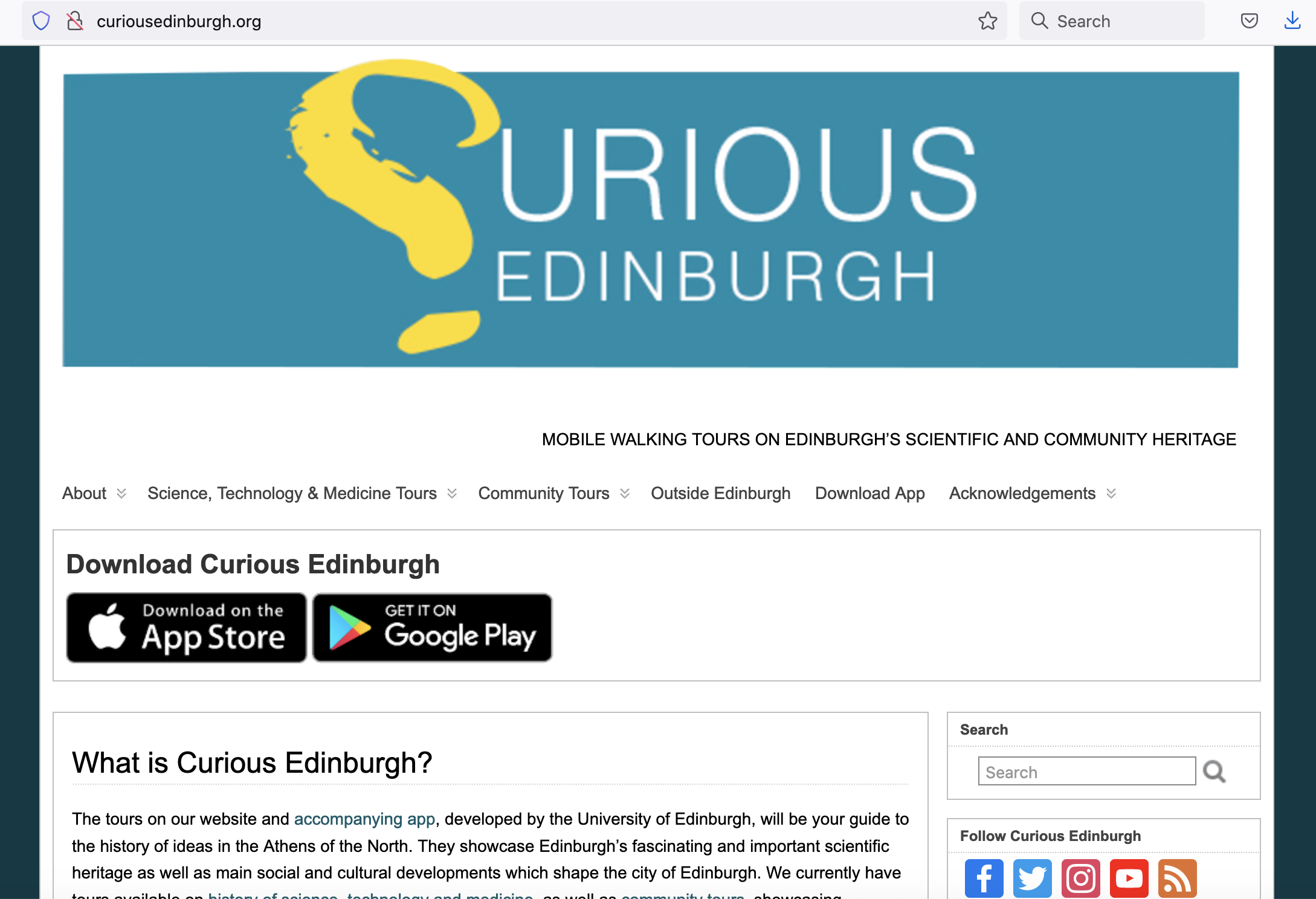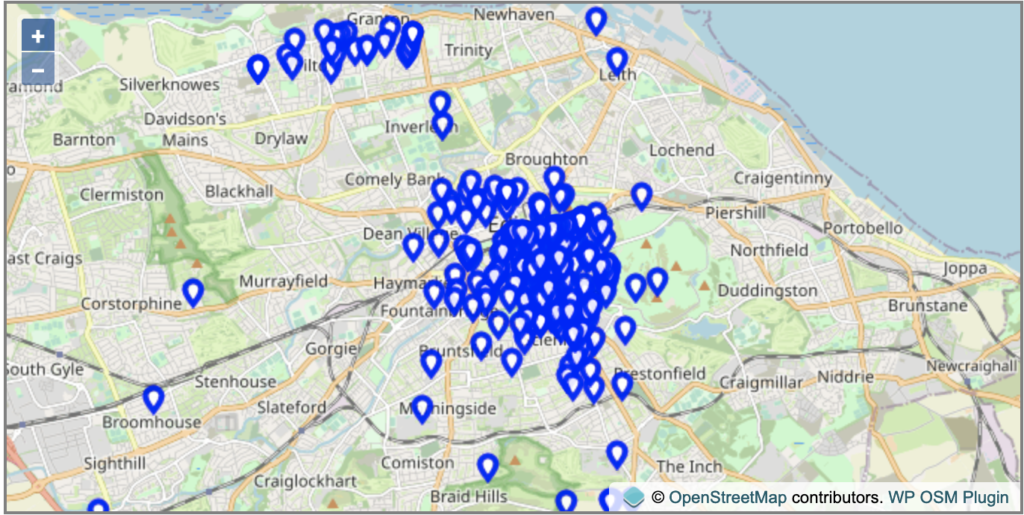Steps away from the mosaic that marks the Tollboth where Thomas Aikenhead was held before he became the last person executed for blasphemy in the United Kingdom, a plaque displayed in St. Giles Cathedral commemorates Sophia Jex-Blake, Scotland’s first female doctor. In Edinburgh, history is literally paved into the streets and embedded into the walls and as you pass through the city, you are surrounded by stories that have shaped Edinburgh, Scotland, and the world.
Curious Edinburgh, a website and mobile app developed by Niki Vermeulen, Kate Bowell, Matjaz Vidmar, Bill Jenkins and various other members of the University of Edinburgh’s Science, Technology, and Innovation Studies (STIS) group, was first created as a way to make the university’s History of Science course more interactive by grounding the curriculum within the geography of the city. Because of this, it started simply with a known set of stories that we could build a walking tour around. In the past 6 years, the project has grown from one tour to 19, with plans for many more, and has expanded beyond the boundaries of both the university and Edinburgh. Even so, the core principles of how we form partnerships, develop tours, and help students, courses, community groups, and the general public use our platform as a learning and engagement tool has remained the same.
Every tour begins with a local story to tell. In the beginning of Curious Edinburgh, those stories came from courses connected to the STIS department. As the app’s reputation grew, we began cultivating relationships with researchers and lecturers outside the department and community members outside the university. For every tour, we spend considerable time with our partners crafting strong, accessible narratives. This means dedicating time to editing and shaping the stories of each stop to ensure they are clear, concise, and cohesive, with one focused story per stop that complements, but is not dependent upon, any of the others. Key to this process is the tour template we developed with specific guidelines for story structure, image details, location data, and other ancillary information. Using the template helps everyone involved in a tour stay on the same page (literally). Moreover, the development and maintenance of the technical side of the app would not have been possible without close collaboration with the University of Edinburgh’s tech wizards, EDINA and Learning, Teaching and Web Services.
There are multiple ways students engage with Curious Edinburgh’s content. As learners, the app is a complementary tool that encourages independent learning by allowing students to encounter course content outside of the classroom on their own schedule and at their own pace. The app also provides new context for the immediacy of that information, situating historical events within present spaces. Place matters and through Curious Edinburgh historiographic literature on spatial dimensions of science becomes connected to local stories. As creators, students have used the app platform as a way to develop their own science communication and public engagement abilities. Several university courses have incorporated the creation of tour stops into their curricula, inviting students to develop critical thinking and practical skills around producing content for different audiences. A student evaluated the app against another University of Edinburgh app as a final assessment for the University’s Education and Digital Cultures course. His youtube video essay provided us with valuable feedback and he stated “it does give you a different relationship with your surroundings.”
The audience for Curious Edinburgh tours has also grown beyond the classroom. We are the most-used app from the University of Edinburgh and through the development of new walking tours we are able to connect our users to the ways and places current global issues are playing out locally. In our recent Public Health tour, launched in collaboration with Edinburgh Medical School, the story of the Usher Institute public health department connects Edinburgh’s medical past with the current health responses in both Scotland and the UK, providing another perspective on the pandemic. The debates around decolonisation of the University of Edinburgh led by UncoverED and the presence of the global Black Lives Matter movement in the city were the focus of two tours in 2020, and climate change, specifically the challenges for Scottish coastal communities, is the focus of a new series of Curious Coastline walks we hope to develop soon. By working with local community groups, activist networks, and concerned citizens, Curious Edinburgh becomes a tool to help make their stories and causes visible to larger audience.
 By telling new stories about known places, Curious Edinburgh is a source of learning – not only for those using our tours, but also for those developing our platform. Maintenance of the app and finding continued financial support has proved one of the project’s biggest challenges, and we are extremely grateful for a diversity of people and funding sources supporting us throughout the past 6 years and for the Tam Dalyell Prize for Excellence in Public Engagement we won in 2017.
By telling new stories about known places, Curious Edinburgh is a source of learning – not only for those using our tours, but also for those developing our platform. Maintenance of the app and finding continued financial support has proved one of the project’s biggest challenges, and we are extremely grateful for a diversity of people and funding sources supporting us throughout the past 6 years and for the Tam Dalyell Prize for Excellence in Public Engagement we won in 2017.
It has been incredibly gratifying to watch Curious Edinburgh grow as a tool for students and the public as users and creators and we look forward to continuing to develop share new histories both within Edinburgh and beyond. So visit our website, take a tour, or, if you’re in Edinburgh, open up the app. You never know what stories may have happened right where you’re standing…

